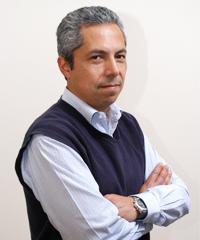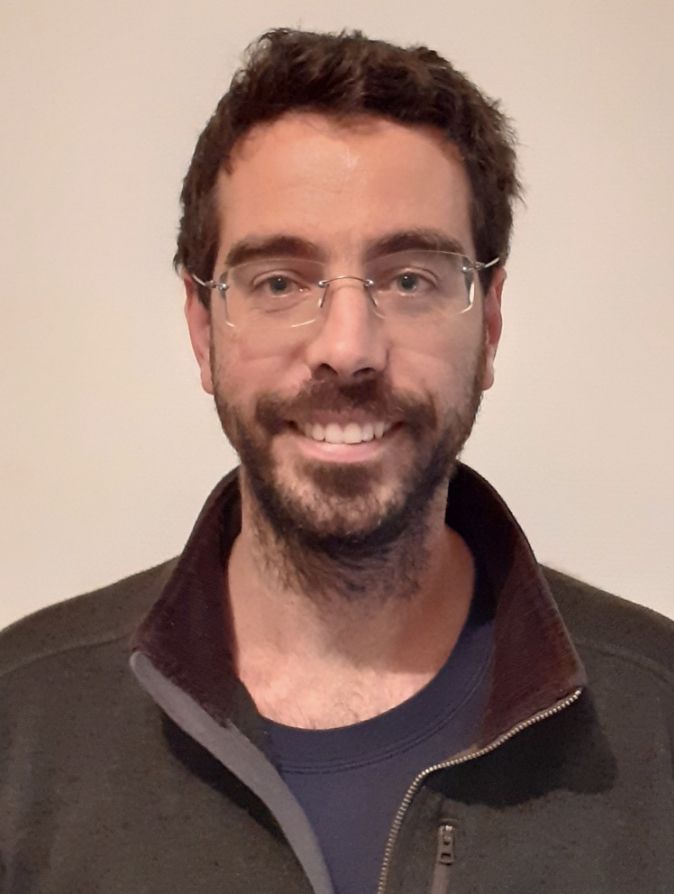
The Franco-Chilean Associate Team Anaconda: theoretical and numerical analysis of conservation laws for multicellular dynamics, is composed of researchers from the MUSCA project-team of the Inria Saclay centre, the Université d'Orléans and the Universidad de Concepción. Here they work on the analysis of mathematical models dedicated to multicellular dynamics. The team has devoted itself to research on mathematics applied to biology and to understand the behavior of partial differential equations (PDEs) for specific applications. To this end, the team studies two main classes of PDE models of structured populations: phase separation models (Lifshitz-Slyozov type) and free/motion boundary problems, to investigate biological questions of cell growth (mainly of adipocytes); and morphogenesis processes (tissue homeostasis of intestinal crypts and ovarian follicle development).
In this team, MUSCA researchers from the Inria center in Saclay, the University of Concepción, the Universidad del Bío Bío and the University of Picardie Jules Verne collaborate. On this occasion, we spoke with the coordinators of the Anaconda Associate Team: Romain Yvinec, researcher at the French National Research Institute for Agriculture, Food and Environment (INRAE) and member of the MUSCA project-team of the Inria Saclay centre; and Mauricio Sepúlveda, professor at the Department of Mathematical Engineering of the Faculty of Physical and Mathematical Sciences of the University of Concepción, to learn more about their collaborative work.
Could you introduce us to Anaconda?
Romain Yvinec (R. Y.): The Anaconda team focuses primarily on partial differential equation (PDE) modeling for biology. This formalism allows describing populations in which individuals are structured by continuous traits (e.g. age, size), and interact with each other. Our goal is to study long-term behavior, develop numerical schemes and inverse problems, to recover the law of population evolution from observations of the population.
Mauricio Sepúlveda (M. S.): The inverse problems for these systems of biology equations are addressed by calculating the adjoint state, the complexity and novelty of which is associated with the possible nonlinear and nonlocal terms of the mathematical-biological models..
Regarding the origin of Anaconda, how did you first start collaborating?
R. Y.: Our Associate Team has its origin in a common collaborator, Erwan Hingant, who held a position at the Universidad del Bío-Bío in Chile and is now an associate professor at the Université d'Amiens in France. There, a common interest in EDP conservation laws emerged, and we were looking for calls for proposals that could finance visits in both directions.
M. S.: From the previous collaboration with Erwan Hingant, I met Romain Yvinec, and after an initial project meeting I had a better understanding of the biological models, which gave me the opportunity to materialize the collaboration. Once Erwan Hingant moved to Amiens in France, I was invited to take over the Chilean counterpart of the project.
Which are your specific areas of research? What scientific questions do you seek to answer or have already answered with the project?
R. Y.: My area of research is mathematics applied to biology, using deterministic or stochastic models. I seek to understand the long-term behavior of PDEs with conservation laws of interest for a specific application (e.g., ovarian folliculogenesis), as well as perform inverse problems to recover parameter values from population snapshot data.
M. S.: My area of research is numerical analysis for PDEs, applied mathematics and inverse problems associated with these equations and numerical schemes using the adjoint state method.
What are the objectives and expected results of Anaconda?
R. Y.: The expected added value of the Associate Team will be to perform theoretical analysis of PDE models, design adapted numerical schemes and, when relevant, innovative inverse problem strategies, to apply them synergistically to various cell biology processes.

Verbatim
The combination of the researchers' different expertise will allow us to address practical problems of identifying biological parameters associated with the models under study.
Professor, Department of Mathematical Engineering, Faculty of Physical and Mathematical Sciences, Universidad de Concepción
What are the applications that Anaconda could have or has had?
R. Y.: In the course of the project, at least two applications are pursued. The first is to understand and quantify the growth and maturation of ovarian folliculogenesis in fish throughout their life span, based on the measurement of the (snapshot) size of the ovarian follicle population at different developmental ages. The second is to understand intestinal crypt cell morphogenesis in interaction with microbiota-derived metabolites.
M. S.: The inverse problems, besides being an interesting problem from the mathematical and analytical point of view, have as an application the identification of physical and biological parameters of the proposed models, and thus have a tool for validating the models by contrasting them with experimental observations.
About ovarian folliculogenesis
Folliculogenesis in fish is the biological process by which ovarian follicles develop and mature in female fish. Ovarian follicles are small structures that contain immature ova or eggs, which makes the process critical for fish reproduction, as follicles that release mature eggs that can be fertilized are selected and developed.
Folliculogenesis in fish is regulated by a number of hormonal and environmental processes that vary according to species and environmental conditions. For example, water temperature, light, food and sexual maturity are factors that influence this process.
In short, it is a key process for reproduction that can change according to the animal species and environmental conditions.
One of the objectives of the ANACONDA associate team is to understand and quantify the growth and maturation of ovarian folliculogenesis in fish throughout their lives by measuring the size (snapshot) of the ovarian follicle population at different ages of development, thanks to applied mathematics.
How does the work between the French and Chilean teams complement each other?

Verbatim
The French side has more experience in biological modeling and theoretical analysis, while the Chilean side has more experience in numerical analysis and inverse problem strategies. All these skills are necessary to close the loop on a given biological problem, so collaboration is essential.
Researcher at the French National Research Institute for Agriculture, Food and Environment (INRAE) and member of the MUSCA project-team at Inria
M. S.: Collaboration is essential between the project partners. The French researchers are attached to laboratories specifically oriented to biology and form a consolidated team with sufficient knowledge to model the biological phenomena of interest. On the other hand, both parties, Chilean and French, have sufficient knowledge in numerical methods and inverse problems to interact together both from the theoretical and applied point of view and meet the objectives of the project.
¿What is an Associate Team?
An associate team is a joint research project between an Inria project-team and a foreign research team. For a period of 3 years, the partners jointly define a scientific objective, a research plan and a program of bilateral exchanges.
Since Inria's arrival in Chile in 2012, 29 Franco-Chilean research projects in different areas of digital sciences have been funded under this program by Inria.
Currently, there are nine Associate Teams working, in which researchers from Inria centers in France collaborate, such as the Inria Centre at the University of Bordeaux, Inria Centre at the University of Grenoble Alpes, Inria Centre at the University of Lille, Inria Lyon Centre, Inria Nancy - Grand Est Centre, Inria Paris Centre, Inria Centre at Rennes University, Inria Antenna at the University of Montpellier, Inria Saclay Centre, Inria Centre at Université Côte d’Azur; and Chilean institutions, such as Universidad de Chile, Pontificia Universidad Católica de Chile, Universidad del Bío Bío, Pontificia Universidad Católica de Valparaíso, Universidad Adolfo Ibáñez and Universidad de O'Higgins.

